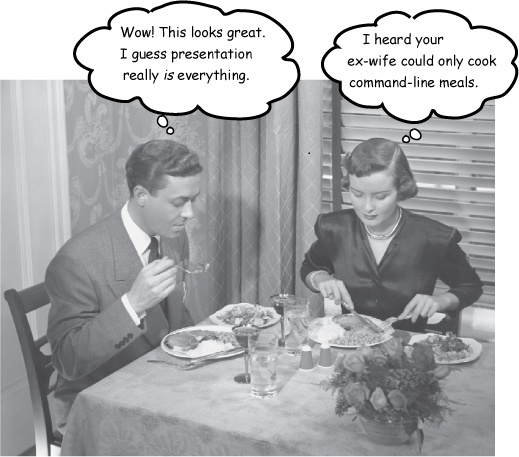Chapter 12. Getting GUI: A Very Graphic Story

Face it, you need to make GUIs. If you’re building applications that other people are going to use, you need a graphical interface. If you’re building programs for yourself, you want a graphical interface. Even if you believe that the rest of your natural life will be spent writing server-side code, where the client user interface is a web page, sooner or later you’ll need to write tools, and you’ll want a graphical interface. Sure, command-line apps are retro, but not in a good way. They’re weak, inflexible, and unfriendly. We’ll spend two chapters working on GUIs, and learn key Java language features along the way including Event Handling and Inner Classes. In this chapter, we’ll put a button on the screen, and make it do something when you click it. We’ll paint on the screen, we’ll display a jpeg image, and we’ll even do some animation.
It all starts with a window
A JFrame is the object that represents a window on the screen. It’s where you put all the interface things like buttons, checkboxes, text fields, and so on. It can have an honest-to-goodness menu bar with menu items. And it has all the little windowing icons for whatever platform you’re on, for minimizing, maximizing, and closing the window.
“If I see one more command-line app, you’re fired.”
The JFrame looks different depending on the platform you’re on. This is a JFrame on Mac ...